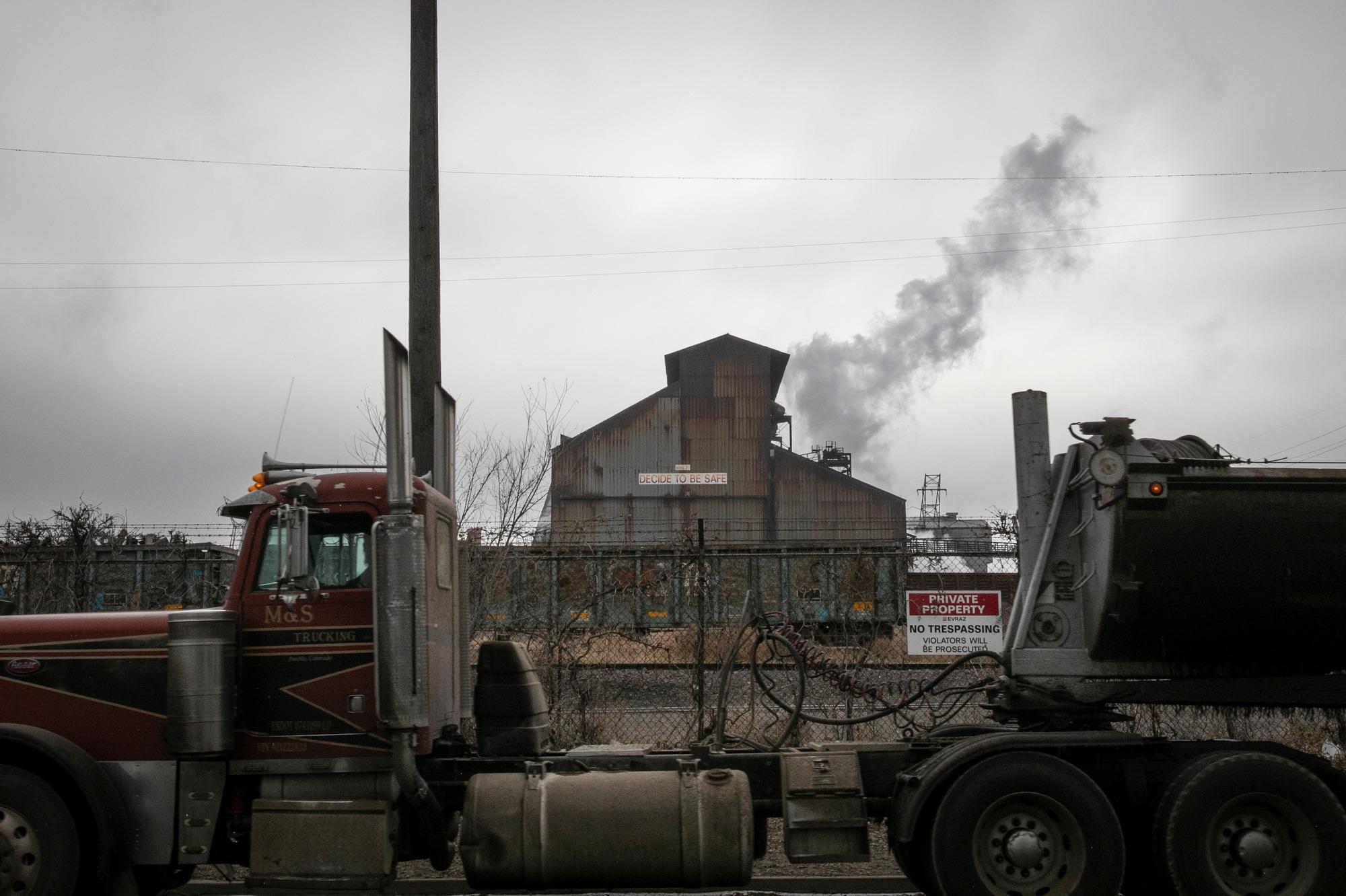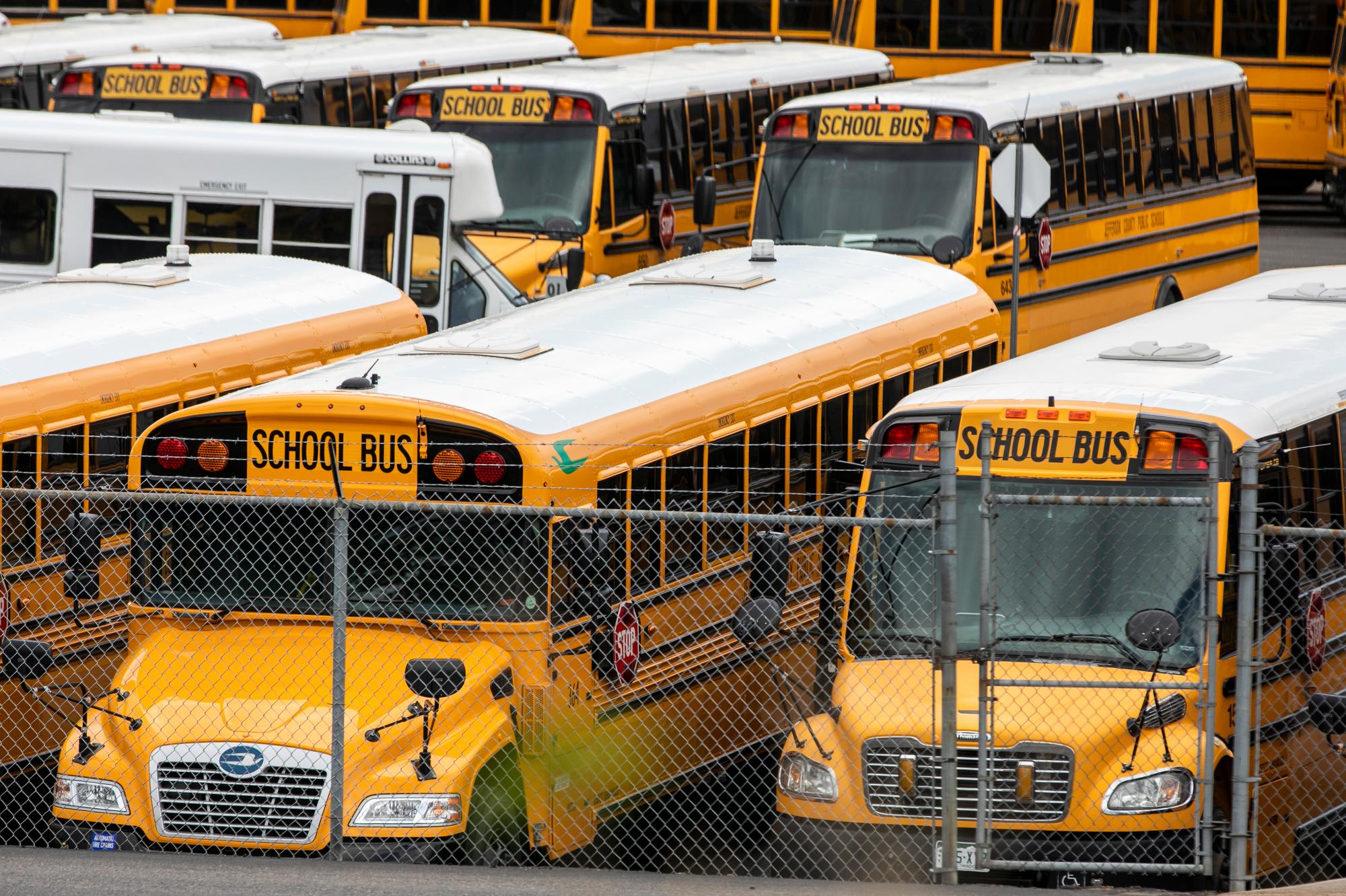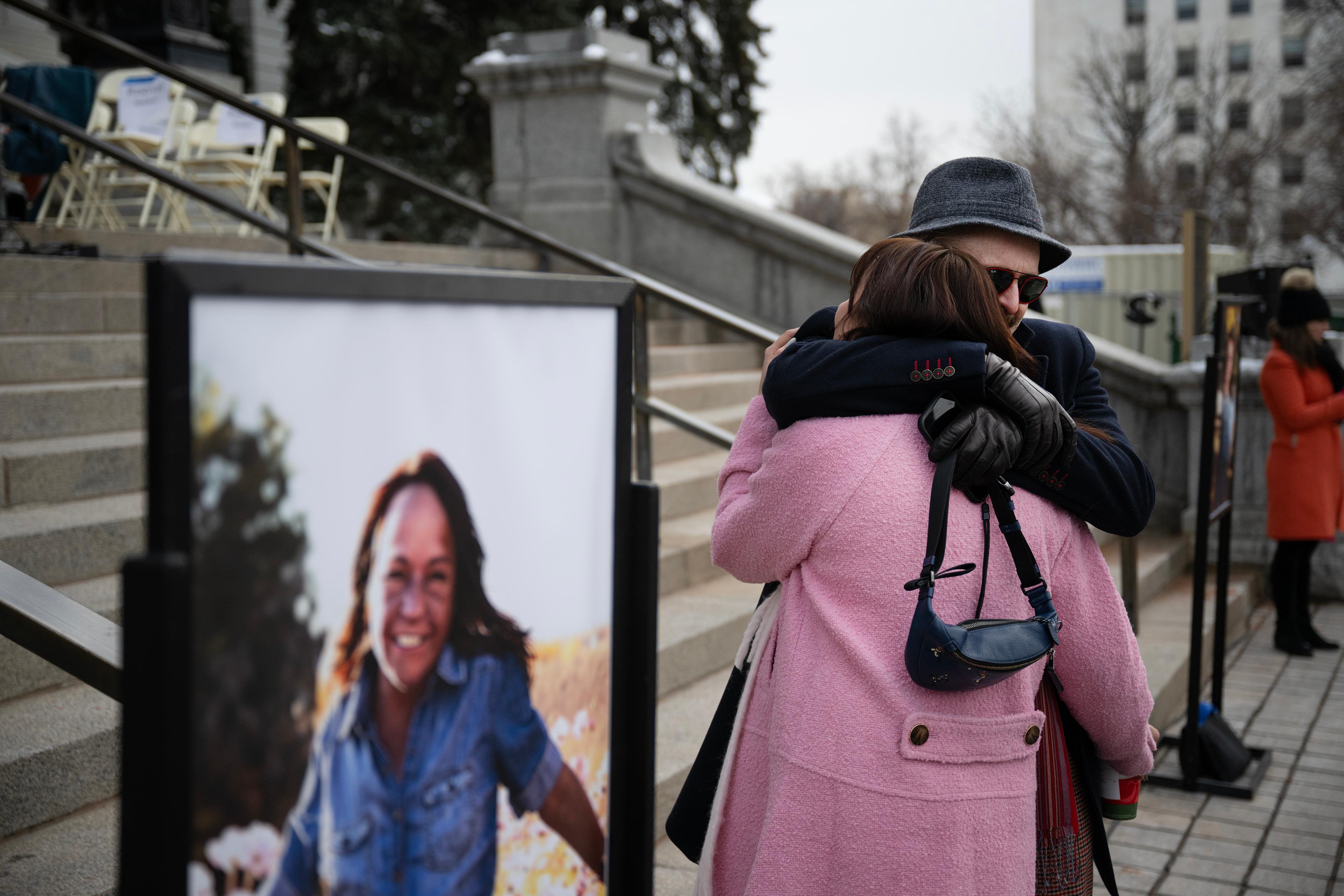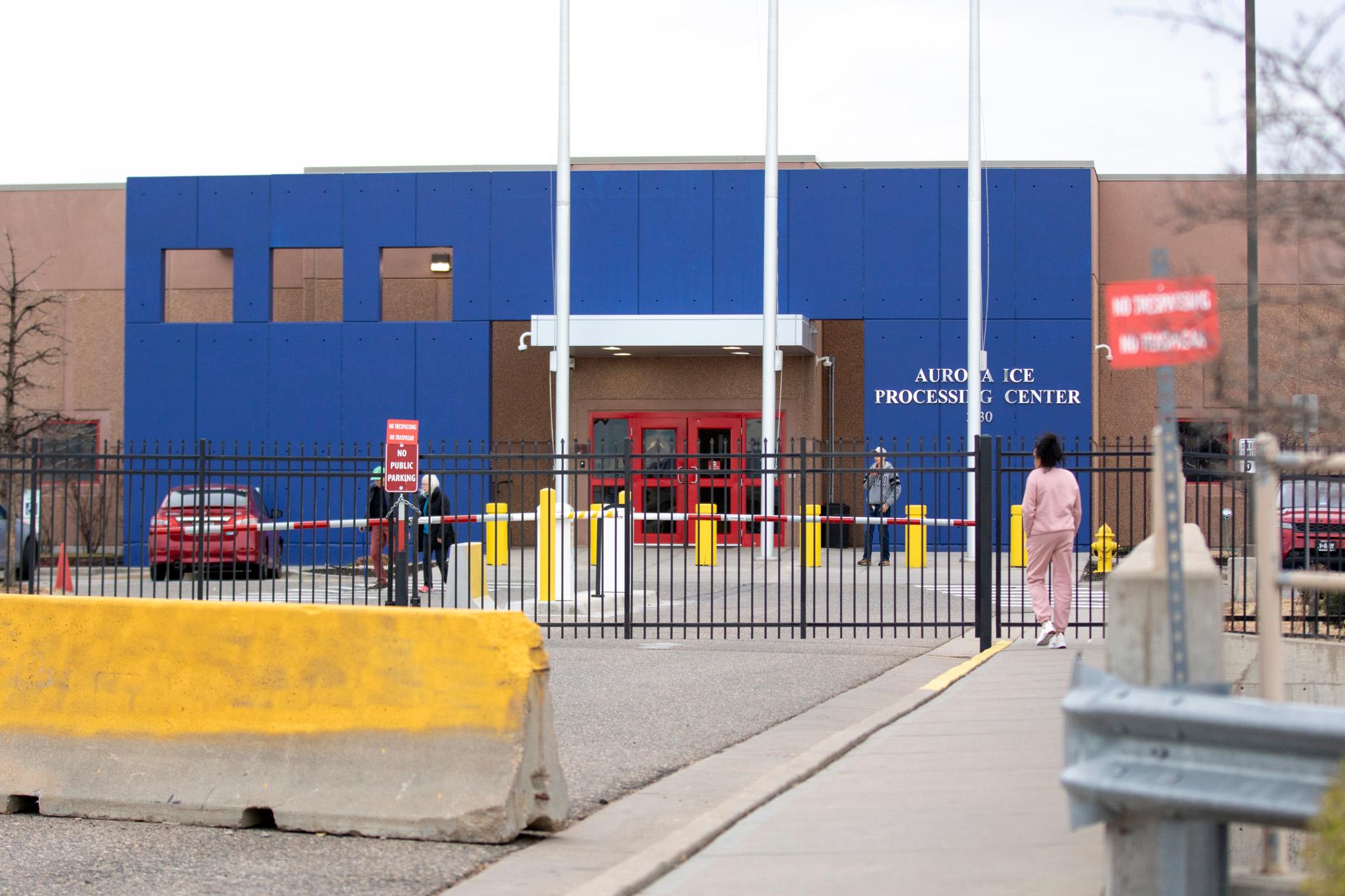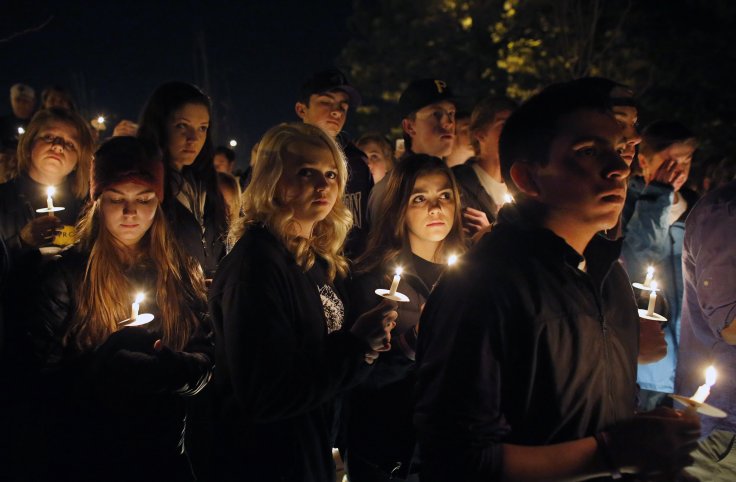
After 17-year-old Claire Davis was murdered by a classmate at a Denver-area high school in December 2013, numerous investigations pointed to deficiencies in safety policies at Arapahoe High School. The legislature responded with the Claire Davis Act, passed in 2015, which allows victims to sue districts for liability if they fail to ensure the safety of students and staff on school property or at district-sponsored events. The law took full effect July 1, 2017.
Districts can face penalties of up to $350,000 per victim, or a maximum of $990,000 for multiple incidents. The new legal standard requires districts to prove they used "reasonable care" to prevent "reasonably foreseeable" murders, first-degree assaults or felony sexual assaults.
Backers of the bill in 2015 said it would hold districts accountable and make schools safer. Davis' mother testified to lawmakers that the bill established "a path that will enable all of us to change the direction and the culture in Colorado schools." Then-Senator Bill Cadman, a Republican who co-sponsored the measure, said "school safety and the safety of those kids can no longer be an afterthought."
- Read: SB 2015-213, The Claire Davis School Safety Act
- Read: SB 2015-214, Creating A Legislative Committee On Safety In Schools
But a committee formed at the time of the act's passage has failed to define "reasonable care" and other key elements of the bill. A member of that panel, Chris Harms, heads a state agency called the Colorado School Safety Resource Center. She says school districts have increased staff training in how to recognize students who may pose a threat, and they've boosted their efforts to communicate information about threats. But she said it will likely take a lawsuit against a district to get a full definition of what schools must do to meet the new legal standard.
Colorado Matters host Andrea Dukakis spoke with Harms.
Related:
- How Much Liability Should Schools Have In Shootings? Colorado Law May Change
- Bill Would Hold Public And Charter Schools Liable For Violence On Campus
- A Year After Arapahoe Shooting, Former Student Calls For More Transparency
Read A Transcript
Andrea Dukakis: This is Colorado Matters from CPR News. I'm Andrea Dukakis. It's been almost four years since 17-year-old Claire Davis was murdered by a fellow student at a suburban Denver high school. Now Colorado school districts are facing one of the consequences of that. Under a state law schools could now be held liable and face financial damages if they fail to prevent shootings, assaults, or in some cases, sexual crimes. But some people charged with implementing the law say it's ambiguous. I'm joined by Chris Harms. She's director of the state's Colorado School Safety Resource Center. She was on the committee that was created when the law was passed to study school safety and how to prevent school violence. Chris, welcome.
Chris Harms: Thank you.
AD: Let's start by dissecting this law a bit. It says districts can be sued if they don't exercise, and these are important terms here, "reasonable care to prevent reasonably foreseeable violence". That's specifically three kinds of violence, murder, first degree assault, or felony sexual assault. What does reasonable care mean in this case?
CH: Unfortunately that has not been defined by anyone to date.
AD: So how would you define it?
CH: Well, we hope, first of all, that schools have abided by the Safe Schools Act and have put in place everything that is involved in the Safe Schools Act. I think most of our school districts have taken care of that.
AD: The Safe Schools Act requires what?
CH: It requires that they have a safety plan, that they think about bullying on campus, that they think about threat assessment, and that they do everything that they can to protect students and staff.
AD: So clearly there's some ambiguity here, but give me some idea of what the committee discussed. What are things districts could do that could show more reasonable care?
CH: I think one of the things that the committee spent a lot of time on and is something that I think most districts realize that they have a responsibility to take care of is to have a threat assessment team. That was a lot of what was in the commissioned reports about what happened at the Arapahoe High School incident as well as a lot of the time that was spent with the 214 Committee talking about threat assessment.
AD: This is the committee that you're on?
CH: That is correct.
AD: We'll talk about that in a bit, threat assessment teams. Some teachers have actually decided to arm themselves, which is legal in Colorado in some cases. We'll hear more about that in a moment from CPR's Jenny Brundin, who has a story. But would arming teachers help meet the requirements of reasonable care?
CH: I'm not really too comfortable commenting on schools that arm themselves. I certainly understand why some of our rural schools are doing that because the response time in some of our rural communities could be up to 20 to 30 minutes before law enforcement can come, but I don't believe that was the nature of the Claire Davis Act.
AD: When Governor Hickenlooper signed this bill, Claire Davis's mother said, and I'm quoting here, "We now have a path that will enable all of us to change the direction and the culture in Colorado schools." One of the bill's sponsors, then-Senator Bill Cadman said, "School safety and the safety of those kids can no longer be an afterthought." Will this bill improve school safety by making schools more accountable?
CH: Well, I think our schools have taken school safety very seriously to begin with even prior to this bill and unfortunately I don't think the bill is going to help in some situations anyway. I had the opportunity to be part of a panel at the CASE conference, that's the Colorado Association of School Executives, back in the winter of 2016 and the whole one-day workshop was about the Claire Davis Act and what this would mean for schools. And schools were very concerned about things like they still don't have a means to enforce parents to take their children to a mental health professional for instance. Many of our rural schools can't afford to pay for students to go to a mental health professional.
AD: And what's a scenario where a school is concerned about a particular student but they can't require a parent to do something about it?
CH: Let's say for instance that they do a threat assessment on a child and they decide that they can't, at school, diagnose what might be a mental health concern for that particular student and they request that the parents take the student to a mental health professional before the student is readmitted to the school and the schools have no power to make a parent do that unless the school itself is willing to pay for that. But in many cases schools are required to educate a student so they may be forced to take the student back without having a mental health diagnosis.
AD: Of course that could pose a danger.
CH: Absolutely.
AD: Has anyone asked the legislature or the lawmakers who created this bill what they meant by reasonable care?
CH: I'm not aware of anyone in particular. I do know that the Colorado School District Self-Insurance pool that insures probably about 90 percent of our school districts has tried to work in this last legislative session to come up with a safe harbor bill that would cover schools if they knew exactly what they could do to not lose their governmental immunity, but that also stalled.
AD: We spoke with Chris Wilderman. He's a school district administrator who, until recently, headed security for the Boulder Valley Schools. Wilderman says the districts are struggling with this new law and have been waiting for the state committee to help define it.
Chris Wilderman: That seems to have stalled and the school districts were really counting on their work to help us define some of the ambiguity associated with Senate Bill 213.
AD: We should say that Senate bill 213 is the state law that created this new liability for schools. He said the committee stalled. What happened there?
CH: Well, the committee spent a lot of time listening to testimony of lots of different people who have something to do with school safety, but it's an interim committee, our obligation was actually four years and the chairman never got us to the point that we made any definitive definitions of those terms.
AD: How much money would this mean for school district if they were found liable under the Claire Davis Act?
CH: For an individual is $350,000, up to $990,000 per incident, so it can be substantial. Again, particularly for our rural schools of which we have 148 of our 178 school districts in Colorado.
AD: Is there the potential for this to be financially devastating for a district?
CH: I believe so. I believe unfortunately it will probably get defined in the courts. The piece of the legislation that I'm most concerned about is the fact that schools can lose their governmental immunity for felony sexual assault. I think we're hopefully going to have many fewer murders or other assaults on campus, but I'm afraid that sexual assault may be something where a lot of schools find themselves in trouble.
AD: And why is that?
CH: Because we do have, across the country, we have incidents of inappropriate sexual contact between school personnel and students and also student-on-student assaults. I'm afraid that those happen much more frequently than murder and aggravated assault.
AD: What can school districts do to prevent that, in terms of sexual assault?
CH: Well, we hope that they are training their folks on what is appropriate behavior, what are the boundaries that should be part of their ethical guidelines for their staff.
AD: What else do you recommend to make sure that school districts are covering all of their legal bases?
CH: Again, I think they need to go back to the Safe Schools Act and make sure that they're abiding by all of the pieces that are in that. I think having a trained threat assessment team on campus is extremely important, especially in wake of the Claire Davis Act, and I think having training around adult sexual misconduct and child sexual abuse are important issues also.
AD: Can you give me a picture of how those threat assessment teams work?
CH: Absolutely. We always recommend that there be at least three members of the threat assessment team; an administrator, oftentimes it’s the person who does discipline on campus; a mental health provider, and if there isn't one in the school district that they utilize someone from their community mental health services; and then a law enforcement officer whether it's a campus SRO, School Resource Officer, or again, someone from their community. And, then, they should have a process that they're all trained on, on how they would do interviews for threat assessment procedure and they gather information on the student at risk. It's not just the threat assessment part itself that's important, but even more important is what is the follow-up afterwards. What kinds of resources can they put in place to support a student who is at risk, whether they be mental health resources, whether they be tutoring help, whatever it may be that would help that student feel more connected and not go down a path of violence.
AD: How might that work with a particular student that a school is concerned about?
CH: Well, let's say a student either makes a threat, or maybe writes something in an English class that sounds threatening and then that teacher would refer that student to the threat assessment team. The team would decide who needs to be interviewed, not only the student of concern, hopefully the parents also, as well as any other teachers or coaches or anyone else who has contact with this student and might have information. Probably some of their peers would be also interviewed. And then the threat assessment team sits together and looks over that information and decides whether or not this is a credible threat, and maybe immediate danger and they need to contact law enforcement quickly, or whether they now need to think about all of the resources that they have to put into place to support this student so that they can be successful and not have to leave school.
AD: At this point, how many districts have put these threat assessment teams together?
CH: We're not a compliance agency, so we don't have a list of school districts that have done this. Prior to the Claire Davis Act, the School Safety Resource Center since it opened in 2008, had conducted 20 trainings of school threat assessment teams. Since the Claire Davis Act, we've done an additional 67 trainings on threat assessment.
AD: There had been a threat assessment on the Claire Davis shooter well before that incident, but the experts that looked at the case later were very critical of it. We talked to administrators at a couple of districts. We heard from Chris Wilderman from Boulder a moment ago, and Katherine Plog Martinez from Denver, who said they've spent a lot of time working on how information about a troubled student is shared. Here's Martinez describing what they're doing.
Katherine Plog Martinez: The biggest shift is that we have added flags into our student information system and those flags are done in a way that doesn't indicate the level of threat or the level of risk, and doesn't have information about the assessment necessarily, but flags for all of the adults in the building that the threat appraisal or suicide risk review has been done, so that a teacher, if they haven't already heard from a mental health professional, can reach out to understand how they might be able to support.
AD: There are obviously privacy issues in cases like that. What advice do you give districts to handle those?
CH: Again, since we're not a legal entity, we usually refer districts back to their legal counsel so that they can make those decisions because our school districts are local controlled and they have the choice to decide how they want to monitor their students of risk. But many school districts are doing what Denver Public Schools are doing and they're adding flags to their student information systems so that they can make sure that other staff on a need-to-know basis can support the student at risk.
AD: From a logistical standpoint, what are some of the issues districts encounter with sharing information like this?
CH: Well one of the things is school districts have been hesitant in some cases in the past to pass on information about a threat assessment, either within the school district, let's say from the middle school into a high school, or between school districts when students transfer, but schools are understanding that they do have the ability to share that information when there's been a student at risk and it may be putting another school district or school building at risk, also.
AD: This is obviously a lot of work. Did the legislature put any money into this?
CH: No, they did not, and that was one of the complaints that I heard from the school folks at the CASE conference that they felt like this was a lot of unfunded mandates around school safety.
AD: The state started a hotline called Safe to Tell that encourages students to report concerns. It's already helped avert an attack by two girls in Douglas County and I understand more students are using it over time. What's led more kids to use it?
CH: We know that when a student is at risk, oftentimes they will tell other students before they will tell any adults what is going on. We know in about 70% of the cases of school shootings that at least one other student knew about what was happening. So we're very happy to have Safe to Tell in Colorado and it is the anonymity of the reporter is guaranteed by statute, which makes it something that most of our students are not only aware of, but are willing to use.
AD: This law doesn't just apply to activities that go on within school walls. It also applies to school-sponsored activities. Could a district, for instance, be held liable if a student claims he or she was sexually assaulted at a prom?
CH: The way I read the law, and again, I'm not an attorney, I assume that yes, they could be. Those kinds of concerns were also raised by the school people that I spoke to, particularly because the law, they believe also covers that if a stranger walks on their campus and hurts someone under one of those three kinds of crimes, that the school would also be held responsible. I heard some school folks talk about, "well, does that mean we shouldn't have basketball games on Friday nights because now we're responsible for everybody who shows up at our school event and what they do or don't do".
AD: It sounds like schools have stepped up their prevention efforts, but there's still this question of exactly what they have to do to avoid being held liable if something happens. Let's hear again from Chris Wilderman from the Boulder Valley School, who says he's afraid nobody's really gonna know what that means until somebody takes a school district to court.
Chris Wilderman: That's exactly what the concern is, is that that standard is going to be set based on litigation. If you're the first school district to be sued on this, it's not a good position to be in, but that's definitely the concern is that, that those standards are going to be defined in the courts because school districts are being sued.
AD: Is that what it's gonna take?
CH: Unfortunately, I agree with Chris that I think it will take school districts being taken to court before we really have a good definition of all of the things in the law.
AD: The committee that was supposed to help school districts get safer is inactive right now. Did it do what it set out to do, or is it a problem with the lawmakers leading it aren't in office anymore and the effort has just petered out?
CH: I think it's true that the committee has not defined the law, so I guess that would be a failure of the committee to do what it set out to do originally.
AD: Chris, thanks for joining us.
CH: Thank you very much.
AD: Chris Harms is Director of the Colorado School Safety Resource Center, a part of the Colorado Department of Public Safety. We also heard in the story from Chris Wilderman, who headed security at Boulder Valley School District until last week. He's leaving to take a similar job for Adams District 12, and from Katherine Plog Martinez, who's with the Denver Public Schools. After a break, more on school safety when we hear from some teachers who say they're learning gun skills to protect their students. This is Colorado Matters from CPR News.
|

